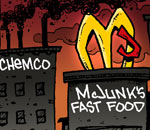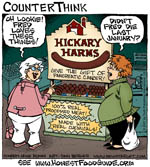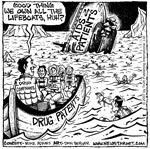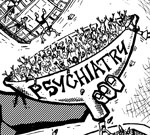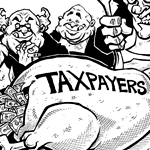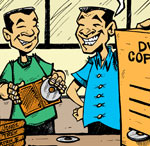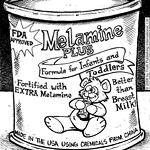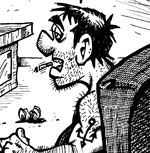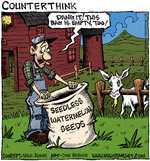Health Benefits of Riboflavin (Vitamin B2)
| Share on Facebook | Share on Twitter | Share on Google+ |
Riboflavin is the chemical name of vitamin B2. In the early 1920's, scientists believed there were two vitamins, vitamin B1 and vitamin B2. The earlier-discovered vitamin B1 could not cure the skin disease pellagra without the action of later-discovered vitamin B2. It took 14 years for chemists to be able to isolate and synthesize vitamin B2 independently of vitamin B1.
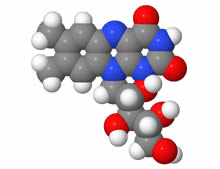 If you have ever noticed your urine after taking riboflavin, you probably saw a fluorescent yellow. The root word "flavin" refers to yellow color. The flavin group is joined to an alcohol group called ribital made from a sugar called ribose, so the entire vitamin molecule is known as riboflavin. Many of the enzymes the body uses riboflavin to make are called metallo-flavoproteins, combining riboflavin with iron or manganese.
If you have ever noticed your urine after taking riboflavin, you probably saw a fluorescent yellow. The root word "flavin" refers to yellow color. The flavin group is joined to an alcohol group called ribital made from a sugar called ribose, so the entire vitamin molecule is known as riboflavin. Many of the enzymes the body uses riboflavin to make are called metallo-flavoproteins, combining riboflavin with iron or manganese.
As you know, every cell in the human body transforms food into energy, sometimes storing that energy as a molecule called ATP. In the human body, ATP is analogous to gasoline for a car. Every cell uses glucose and oxygen to make ATP.
Cells make two of the enzymes they use to transform ADP to ATP with the help of riboflavin. Without riboflavin, not a single cell in the human body can use oxygen and glucose for energy. But making energy is not the only way the body uses riboflavin:
- Riboflavin is essential for regulating the process of reduction and oxidation, receiving and donating electrons, that activates, deactivates, and reactivates thousands of different compounds in the body.
- Riboflavin becomes the co-enzymes that work with the detoxifying P450 enzymes in the liver.
- Riboflavin is essential to the formation of an enzyme called glutathione reductase, which enable glutathione to absorb free radicals of oxygen that would otherwise endanger cells. Glutathione reductase is so dependent on riboflavin that physiologists measure this enzyme to estimate measures of riboflavin deficiency.
- Glutathione reductase, made from riboflavin, is essential to the action of selenium in the human body.
- Xanthine oxidase is made from riboflavin. This enzyme helps the body process purines, which are amino acids found in highest concentrations in anchovies, sardines, scallops, organ meats such as sweetbreads and liver, brewer's yeast, beer, and gravy.
- The body's use of three other B vitamins, niacin, folic acid, and vitamin B6, depends on enzymes made from riboflavin. A deficiency in riboflavin makes it impossible for the body to use these other three B vitamins.
- Riboflavin is necessary for the absorption of iron from food, and long-term riboflavin deficiency can result in iron deficiency. Riboflavin is also necessary for the formation of the enzymes the body uses to transform iron into hemoglobin.
Riboflavin Sources
The most useful riboflavin foods are algae and brewer's yeast. Riboflavin is also abundant in organ meats, such as brain, tripe (menudo), intestines, spleen, kidneys, pancreas (sweetbreads), and liver. Most North Americans don't care for any of these foods, so they get nearly all of their riboflavin from the vitamin supplements added to white flour for making commercial baked goods.
Cooking a riboflavin food doesn't break down the vitamin, but riboflavin is very sensitive to light. Diary companies all over the world have replaced clear glass bottles with opaque cardboard cartons for milk in part to protect the riboflavin inside it. Any food that you eat for its riboflavin content should be stored in a dark, cool place.
| Food | Mg Riboflavin in 200-Calorie Serving |
| Red Bull Energy Drink | 23 |
| Beef Liver | 6 |
| Moose Liver | 5 |
| Sheep Liver | 5 |
| Fortified Breakfast Cereal | 4 |
| Mushroomst | 4 |
| Pork Liver | 3 |
| Pokeweed, Fireweed, Sourdock, Spirulina, Seaweed | 3 |
| Ancho Peppers, Beet Greens, Bitter Gourd, Spinach, Watercress | 2 |
| Baby Food, Blueberries, Mung Bean Spouts, Egg White | 1 |
Since these foods have been measured in 200-calorie increments, it may be necessary to eat up to 8 servings of some of the vegetables listed to get the indicated amount of riboflavin. Here is another way to evaluate riboflavin content of foods:
| Food | Serving | Riboflavin (mg) |
| Almonds | 1 ounce/28 grams | 0.23 |
| Asparagus (boiled) | 6 spears | 0.13 |
| Beef (cooked) | 3 ounces/84 grams | 0.16 |
| Bread, white (enriched) | 1 slice | 0.08 |
| Bread, whole wheat | 1 slice | 0.06 |
| Broccoli (boiled) | 1/2 cup chopped (about 60 grams) | 0.10 |
| Cheddar Cheese | 1 ounce/30 grams | 0.11 |
| Chicken, dark meat (roasted) | 3 ounces/84 grams | 0.16 |
| Chicken, light meat (roasted) | 3 ounces/84 grams | 0.08 |
| Egg (cooked) | 1 large | 0.27 |
| Fortified cereal | 1 cup | 0.59 to 2.27 |
| Halibut (broiled) | 3 ounces/84 grams | 0.08 |
| Milk (nonfat) | 1 cup/240 ml | 0.34 |
| Salmon (cooked) | 3 ounces/84 grams | 0.12 |
| Spinach (boiled) | 1/2 cup (about 60 grams) | 0.21 |
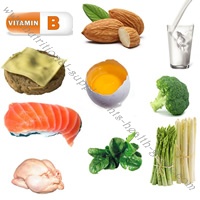
Riboflavin Deficiency Symptoms
What happens when you don't get enough riboflavin?
Riboflavin deficiency was once thought to cause the skin disease pellagra, but later research revealed that riboflavin supplementation merely cured a condition caused by the toxins in moldy grains. There are real riboflavin deficiency diseases, however, that occur all over the world:
- Anemia may occur when cells in the bone cannot make the enzymes needed to "fold" hemoglobin inside red blood cells. Studies in the UK have found that even a slight riboflavin deficiency can cause anemia in women of reproductive age.
- Angular cheilitis may cause painful cracking at the corners of the mouth with accumulation of dry, crusty material, usually with mouth sores and a painful, red tongue.
- Congestive heart failure is made worse by riboflavin deficiency.
- Down syndrome is more likely to occur when women are deficient in riboflavin during pregnancy.
- The eyes may become bloodshot, itchy, and watery. Photophobia, extreme sensitivity of the eyes to bright light, is a classic sign of riboflavin deficiency.
- Pompe's disease, which is treated, in part, with riboflavin, causes profound muscle weakness and a tendency for aneurysm.
- Pre-eclampsia, a condition of dangerously high blood pressure late in pregnancy, is associated with riboflavin deficiency. Taking riboflavin alone, however, is not enough to prevent pre-eclampsia.
- The skin may dry out while mucous membranes become inflamed. Scrotal dermatitis, a severe form of jock itch unrelated to fungal infection, may occur in men.
Most of the conditions are caused ariboflavinosis, a simple failure to get enough riboflavin in the diet.
Who Needs Supplemental Riboflavin?
Riboflavin deficiency can happen to anyone, but it is most common in people who drink too much alcohol and in people who suffer anorexia. Congestive heart failure, however, is usually treated with diuretics that flush vitamin B2 out of the bloodstream, ironically, weakening the heart muscle.
Pompe's disease results from a genetic mistake that prevents the formation of the enzymes that help muscles use the sugar storage muscle glycogen. Although Pompe's disease is not a condition you should attempt to diagnose or treat on your own, riboflavin supplementation is an important part of its treatment.
In addition to these problems, riboflavin deficiency and zinc deficiency usually occur at the same time. And anyone over 50 should consider taking a riboflavin supplement as part of a nutritional program for reducing the risk of cataracts.
How Much Riboflavin Is Enough?
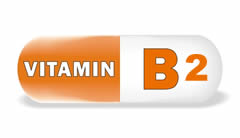 The US Food and Drug Administration set a recommended daily intake (RDI) for riboflavin at just 1.7 mg per day. This is the least amount of riboflavin that will prevent riboflavin deficiency diseases. For good health, however, 25 mg per day is better.
The US Food and Drug Administration set a recommended daily intake (RDI) for riboflavin at just 1.7 mg per day. This is the least amount of riboflavin that will prevent riboflavin deficiency diseases. For good health, however, 25 mg per day is better.How can you tell you are getting enough riboflavin? If your urine is neon yellow, your body is absorbing all the riboflavin it needs and excreting the rest. No other vitamin colors the urine. If your urine is usually yellow, chances are that you are getting enough:
| Recommended Dietary Intake (RDI) for Riboflavin | |||
| Life Stage | Age | Males(mg/day) | Females(mg/day) |
| Infants | 0-6 months | 0.3 | 0.3 |
| Infants | 7-12 months | 0.4 | 0.4 |
| Children | 1-3 years | 0.5 | 0.5 |
| Children | 4-8 years | 0.6 | 0.6 |
| Children | 9-13 years | 0.9 | 0.9 |
| Adolescents | 14-18 years | 1.3 | 1 |
| Adults | 19 years and up | 1.3 | 1.1 |
| Pregnant Women | Any age | - | 1.4 |
| Breast-Feeding Mothers | Any age | - | 1.6 |
Riboflavin for Preventing Cataracts
An Australian study of 2,900 men and women found that those who consumed the most riboflavin, about 2 mg a day, were up to 51% less likely to have an eventual need for cataract surgery than those who consumed the least riboflavin, about 0.1 mg a day.
Riboflavin for Treating Migraines
One study found that 54 men and women who took 400 mg of riboflavin a day were less likely to suffer migraine attacks, and that the effect of taking riboflavin is cumulative. It takes about three months to "kick in." Scientists believe that riboflavin reduces the frequency of migraines by building up energy reserves in the brain, which makes it suitable for use with medications that relieve migraines through different mechanisms.
Who Should Take Supplemental Riboflavin?
I recommend riboflavin supplements for anyone over 50, especially those concerned about the risk of cataracts. A complete-B supplement providing 2 mg of riboflavin a day is ideal.
Frequently Asked Questions About Riboflavin
Q. Are there any riboflavin side effects or riboflavin toxicity?
A. When the Food and Nutrition Board set the recommended daily intake (RDI) in 1998, it did not set an upper limit (UL). No riboflavin side effects have been reported even among people who take 400 mg of supplemental riboflavin daily over an extended period. There are theoretical reasons to believe that high-dose riboflavin could be toxic in people who take megadoses of chromium supplements or who do metalwork with chrome, but these concerns have only a theoretical basis.
Q. Is there any value to riboflavin added to shampoo?
A. No, there is no reason hair follicles would be especially deficient in riboflavin, and the hair itself cannot take up the vitamin.
Q. Is riboflavin the vitamin used to treat conjunctivitis?
A. No, you are more likely to get a good result from taking supplemental biotin, and avoiding consumption of raw egg yolks, which contain a protein that binds biotin.
Q. Can riboflavin dissolve cataracts once they occur?
A. No, but you may be interested in the reports on L-carnosine for this purpose.
Selected References:
Bohles H. Antioxidative vitamins in prematurely and maturely born infants. Int J Vitam Nutr Res. 1997;67(5):321-328.
Crombleholme WR. Obstetrics. In: Tierney LM, McPhee SJ, Papadakis MA, eds. Current Medical Treatment and Diagnosis. 37th ed. Stamford: Appleton and Lange; 1998:731-734.
Cumming RG, Mitchell P, Smith W. Diet and cataract: the Blue Mountains Eye Study. Ophthalmology. 2000;107(3):450-456.
Food and Nutrition Board, Institute of Medicine. Riboflavin. Dietary Reference Intakes: Thiamin, Riboflavin, Niacin, Vitamin B6, Vitamin B12, Pantothenic Acid, Biotin, and Choline. Washington D.C.: National Academy Press; 1998:87-122.
Hankinson SE, Stampfer MJ, Seddon JM, et al. Nutrient intake and cataract extraction in women: a prospective study. BMJ. 1992;305(6849):335-339.
Jacques PF, Bostom AG, Wilson PW, Rich S, Rosenberg IH, Selhub J. Determinants of plasma total homocysteine concentration in the Framingham Offspring cohort. Am J Clin Nutr. 2001;73(3):613-621.
Jacques PF, Kalmbach R, Bagley PJ, et al. The relationship between riboflavin and plasma total homocysteine in the Framingham Offspring cohort is influenced by folate status and the C677T transition in the methylenetetrahydrofolate reductase gene. J Nutr. 2002;132(2):283-288.
Jacques PF, Taylor A, Moeller S, et al. Long-term nutrient intake and 5-year change in nuclear lens opacities. Arch Ophthalmol. 2005;123(4):517-526.
Leske MC, Wu SY, Hyman L, et al. Biochemical factors in the lens opacities. Case-control study. The Lens Opacities Case-Control Study Group. Arch Ophthalmol. 1995;113(9):1113-1119.
Lowik MR, van den Berg H, Kistemaker C, Brants HA, Brussaard JH. Interrelationships between riboflavin and vitamin B6 among elderly people (Dutch Nutrition Surveillance System). Int J Vitam Nutr Res. 1994;64(3):198-203.
Madigan SM, Tracey F, McNulty H, et al. Riboflavin and vitamin B-6 intakes and status and biochemical response to riboflavin supplementation in free-living elderly people. Am J Clin Nutr. 1998;68(2):389-395.
Mares-Perlman JA, Brady WE, Klein BE, et al. Diet and nuclear lens opacities. Am J Epidemiol. 1995;141(4):322-334.
McCormick DB. Riboflavin. In: Shils M, Olson JA, Shike M, Ross AC, eds. Modern Nutrition in Health and Disease. 9th ed. Baltimore: Williams & Wilkins; 1999:391-399.
McCormick DB. Two interconnected B vitamins: riboflavin and pyridoxine. Physiol Rev. 1989;69(4):1170-1198.
Neugebauer J, Zanre Y, Wacker J. Riboflavin supplementation and preeclampsia. Int J Gynaecol Obstet. 2006;93(2):136-137.
Powers HJ. Current knowledge concerning optimum nutritional status of riboflavin, niacin and pyridoxine. Proc Nutr Soc. 1999;58(2):435-440.
Powers HJ. Riboflavin-iron interactions with particular emphasis on the gastrointestinal tract. Proc Nutr Soc. 1995;54(2):509-517.
Rivlin RS. Riboflavin. In: Ziegler EE, Filer LJ, eds. Present Knowledge in Nutrition. 7th ed. Washington D.C.: ILSI Press; 1996:167-173.
Sandor PS, Afra J, Ambrosini A, Schoenen J. Prophylactic treatment of migraine with beta-blockers and riboflavin: differential effects on the intensity dependence of auditory evoked cortical potentials. Headache. 2000;40(1):30-35.
Schoenen J, Jacquy J, Lenaerts M. Effectiveness of high-dose riboflavin in migraine prophylaxis. A randomized controlled trial. Neurology. 1998;50(2):466-470.
Soares MJ, Satyanarayana K, Bamji MS, Jacob CM, Ramana YV, Rao SS. The effect of exercise on the riboflavin status of adult men. Br J Nutr. 1993;69(2):541-551.
Wacker J, Fruhauf J, Schulz M, Chiwora FM, Volz J, Becker K. Riboflavin deficiency and preeclampsia. Obstet Gynecol. 2000;96(1):38-44.
-
Skin CareMen Skin Care
-
Free ResourcesFree eBooks
-
Every human being is the author of his own health or disease.Buddha
-
Featured Health SupplementTotal Balance
 provides a broad spectrum of around 80 of the nutrients that your body needs…including vitamins, minerals, trace elements, antioxidants, amino acids, neuronutrients, bioflavonoids, carotenoids, herbal extracts, enzymes and other complementary co-factor ingredients.
provides a broad spectrum of around 80 of the nutrients that your body needs…including vitamins, minerals, trace elements, antioxidants, amino acids, neuronutrients, bioflavonoids, carotenoids, herbal extracts, enzymes and other complementary co-factor ingredients.
-
